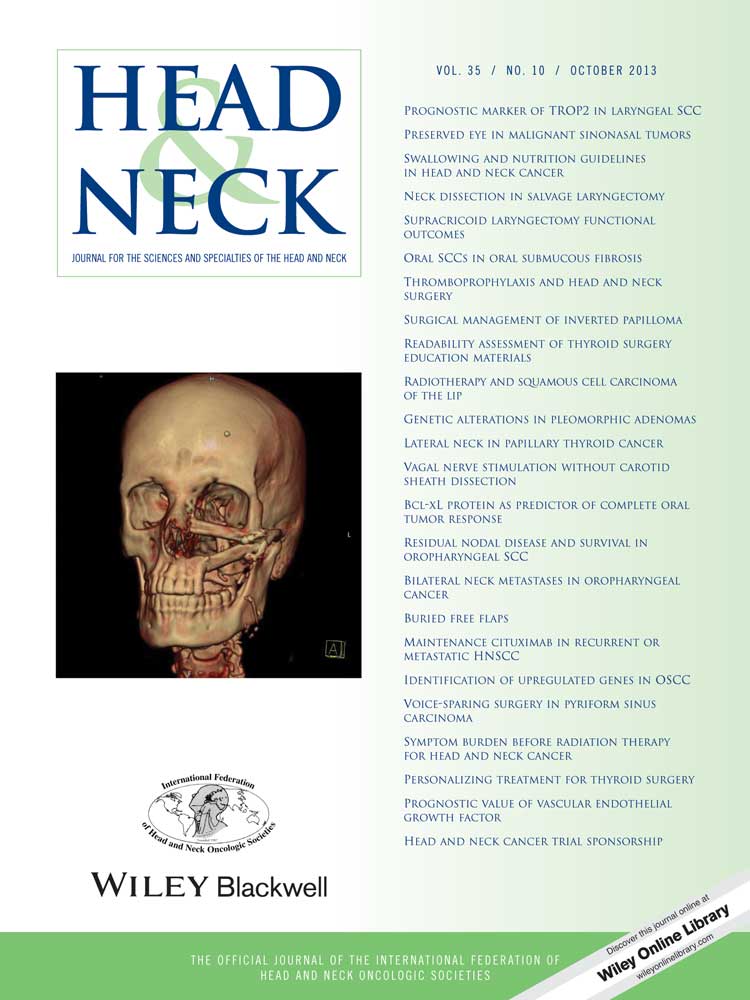Immunoglobulin G4–related sclerosing disease of the paranasal sinus
Abstract
Background
Immunoglobulin G4 (IgG4)–related sclerosing disease is a systemic disease characterized by extensive IgG4-positive plasma cells and T-lymphocyte infiltration of various organs. We present a case of a 69-year-old man with maxillary sinus IgG4 sclerosing disease, with orbital invasion treated with rituximab and dexamethasone pulse therapy. Surgery was used as well to debulk the disease and to obtain tissue for diagnosis.
Methods
A PubMed search using the key phrase “IgG4-related Sclerosing Disease” was performed. There were 304 different articles regarding the disease for a multitude of different organ sites. Of the 304 articles, there were 3 articles that reported this disease in the paranasal sinuses.
Conclusions
IgG4-related sclerosing disease is a rare entity in the head and neck. There are documented reports of steroid therapy for this disease, but the patient presented here demonstrated clinical progression of disease with steroids alone. The use of combination therapy of surgery, dexamethasone, and rituximab provided clinical improvement and stable disease determined by radiographic means. © 2012 Wiley Periodicals, Inc. Head Neck 35: E321–E324, 2013




